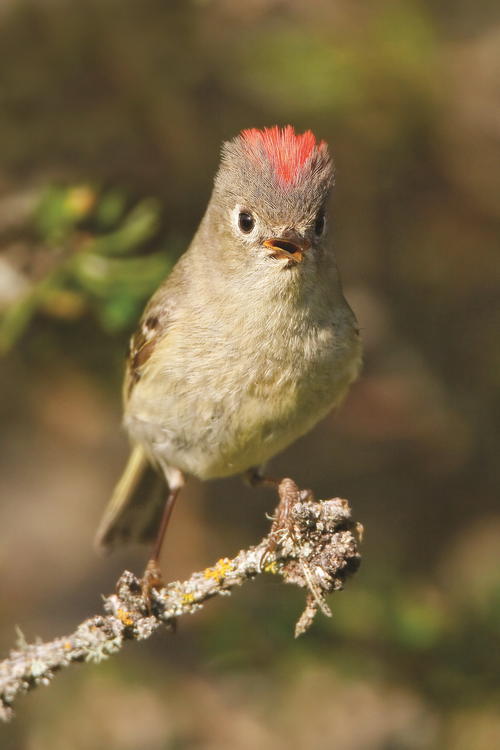Now You See It... Now You Don't
Don't let the crowns fool you. Kinglets are not royalty.

Dictionaries define kinglets as minor tyrants ruling over disappointing kingdoms. Despite their names, North America’s tiny avian kinglets are anything but petty tyrants. Instead, the two species—the goldencrowned (Regulus satrapa) and the ruby-crowned (Regulus calendula)—are unobtrusive birds, quietly living out their lives near the tops of the spruce and balsam forests that they love.
Kinglets are not showy birds. They blend in with their native forests, an olivaceous color on the upper body changing to whitish or gray on the abdomens, and white-and- black wing bars that look like shoulder epaulets. The golden-crowned kinglets, as their name implies, have a yellow crown patch, surrounded on three sides by a deep black border that becomes part of the bird’s black-and- white striped face. Males have central orange feathers in their crown patch that are visible only when they lift the crest in display or agitation.
Only the male ruby-crowned kinglets have a red crown patch. Most of the time the patch is hidden, leaving only a single stripe down the length of the head that looks like an artist wiped a brush clean on the little bird. Even this splash of color is occasionally hidden, but when the bird lifts the crest in full spikey red display, it truly looks like a jeweled crown of old.
Kinglets are never still. Their rapid metabolic rate forces these birds to spend all of their daytime hours foraging, hovering, and hanging upside down as they hunt for prey, with only occasional breaks to drink from streams or open water. An active kinglet that does not eat for 20 minutes can lose one-third of its body weight. The bird will die if it remains unfed for a full hour but, surprisingly, a kinglet burns only about 10 calories per day. In the natural world, small creatures with high energy demands tend to live short lives. That holds true for kinglets, who rarely survive longer than four years.
Read the rest of this article in Wildfowl Carving Magazine's Spring 2015 issue.
Read NextA Tale of Two Teal



